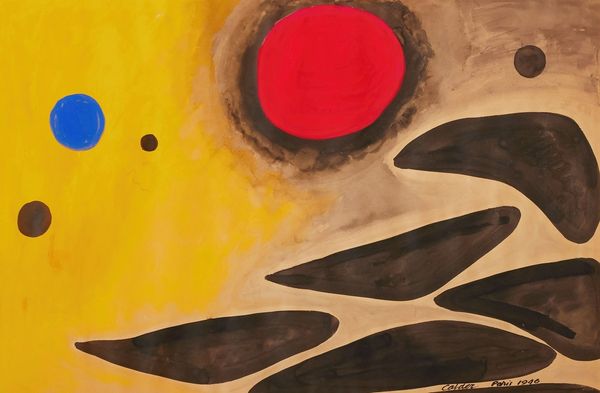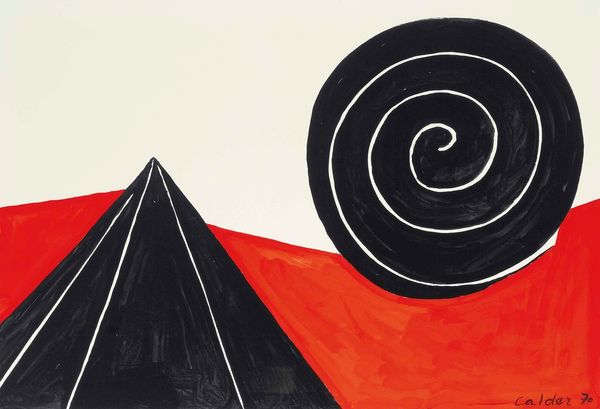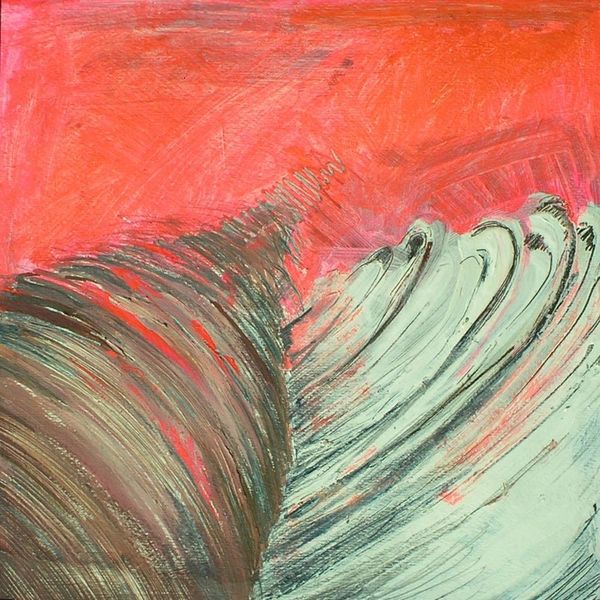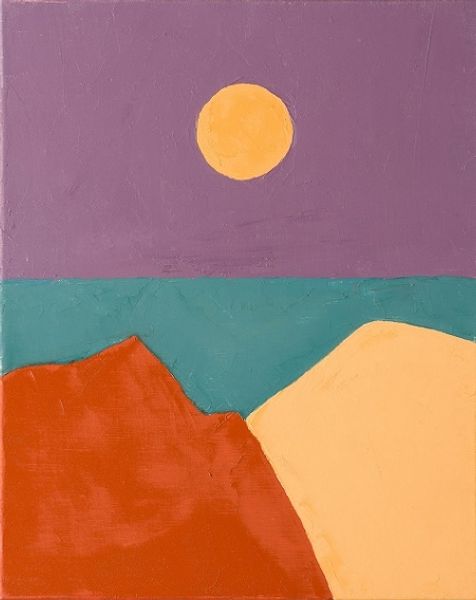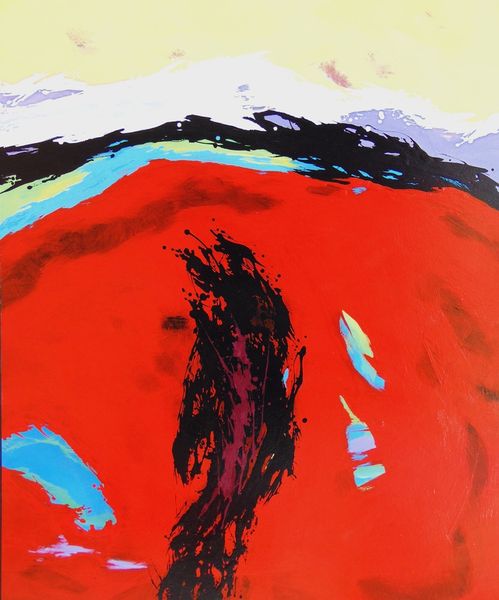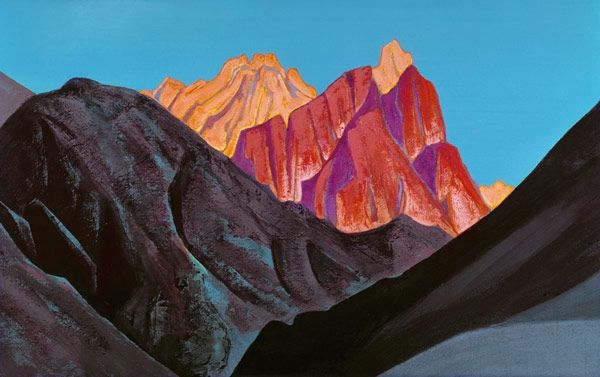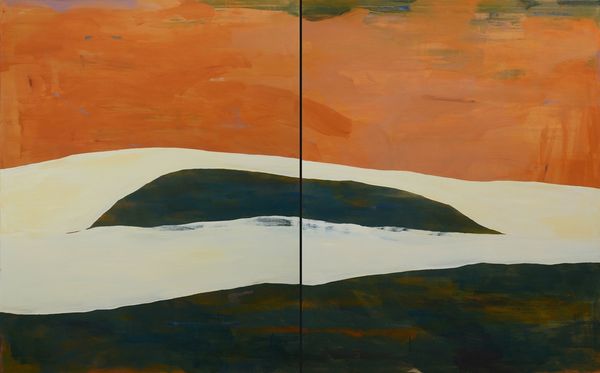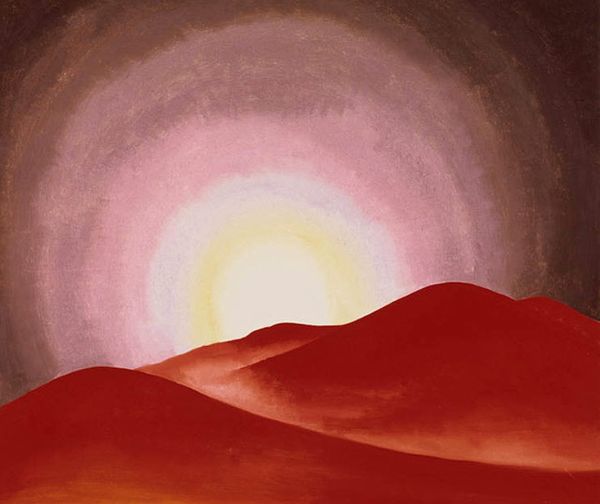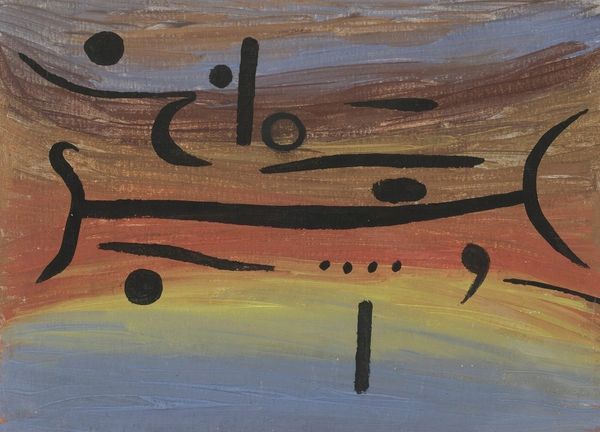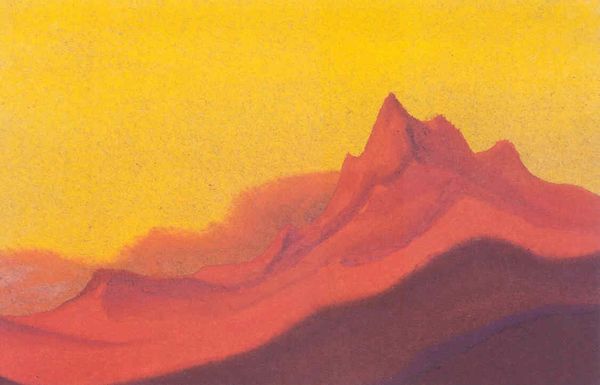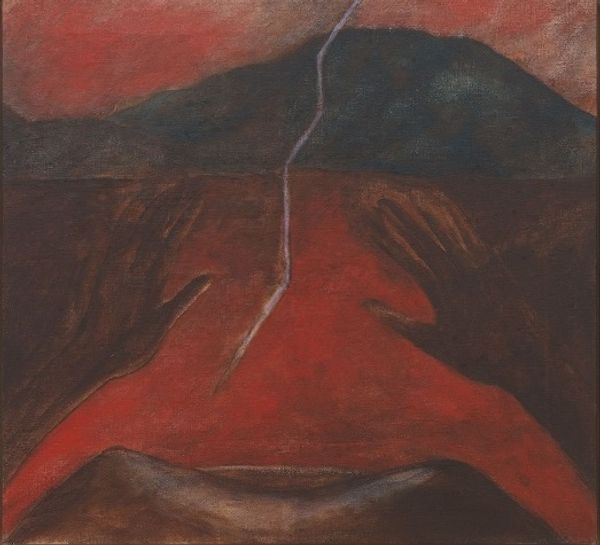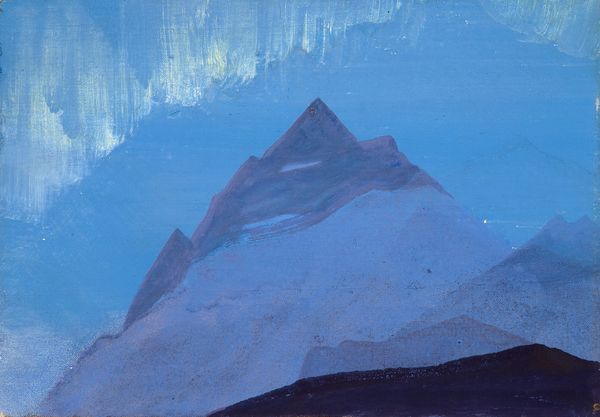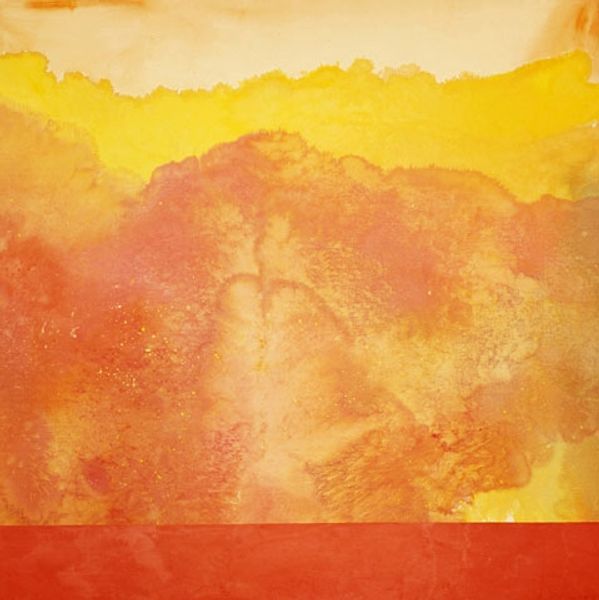
painting, acrylic-paint
#
contemporary
#
painting
#
landscape
#
bird
#
acrylic-paint
#
figuration
#
geometric
#
modernism
Copyright: Jagdish Swaminathan,Fair Use
Curator: What a striking composition. This untitled piece from 1983 by Jagdish Swaminathan really grabs your attention. He was known for his engagement with geometric forms and indigenous art traditions. Editor: My first impression is the sheer boldness of it! That intense red background...it’s both captivating and unsettling. It gives the whole scene an almost primal feeling, a silent drama. Curator: Indeed. Swaminathan employed acrylic paint on canvas here. Look at the way he builds the mountains with countless individual strokes. It suggests a cumulative, almost laborious process, turning away from pure form. This meticulous build-up reminds us that artmaking, just like so much else, is material work. Editor: I see those conical forms as stand-ins for something deeper. Their repeated appearance invokes notions of ancient landscapes and cultural memory. The bird silhouette feels very powerful. It could be interpreted as a symbol of freedom but its blackness against the harsh red can also conjure more troubling thoughts around environmental change. Curator: Absolutely. Swaminathan rejected easy labels, so it is always more interesting to ask, “How was it made?” Acrylics are industrial—a sign of the increasing mechanization of life during the later half of the 20th Century. The textured mountains juxtapose traditional iconography and contemporary means. It’s worth examining the economics that made such hybridity possible. Editor: And this interplay hints at his broader engagement with socio-political discourses. What does it mean to place such simplified figuration within an era marked by globalization and post-colonial anxieties? The redness is almost violent. This suggests how art addresses not just surface beauty, but also enduring issues tied to history and place. Curator: It pushes past aesthetic appreciation and invites considerations about art’s position relative to changing social norms, its method. Swaminathan was making statements. Editor: Yes, by situating this piece within an intersectional lens, we are prompted to think more broadly about how symbolic forms come to embody ideas about belonging, oppression, or, conversely, liberation. It feels very relevant still today. Curator: Examining both method and symbolic meanings can lead us toward unexpected places of insight. Editor: Indeed. It encourages us to keep pushing these visual narratives for our future.
Comments
No comments
Be the first to comment and join the conversation on the ultimate creative platform.
